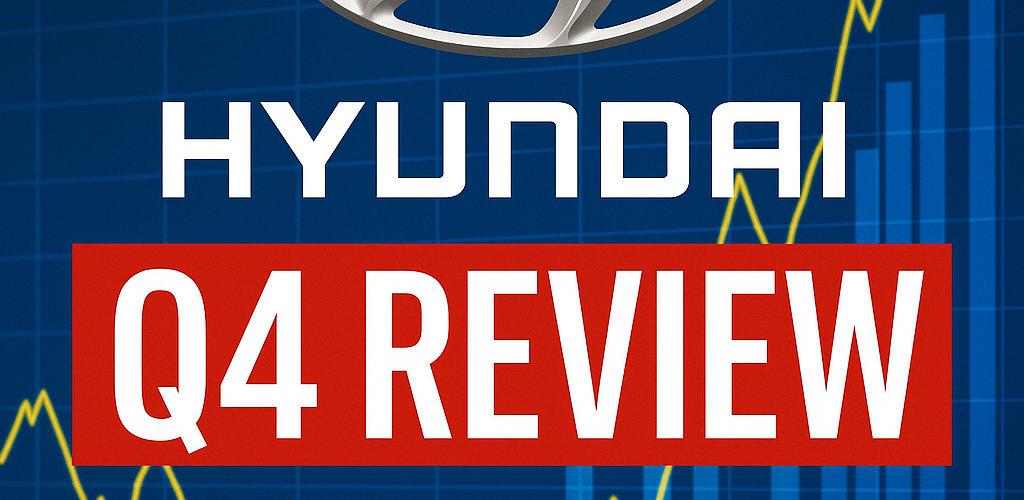Hyundai Motor Q4 2024 Review: Everything to Know

Hyundai Motor Company concluded the fourth quarter of 2024 with a mixed financial performance, demonstrating resilience in the face of global economic uncertainties and shifting market dynamics. The company’s strategic focus on electrification, premiumization, and global expansion played pivotal roles in navigating the complex automotive landscape.
Global Financial Performance
In Q4 2024, Hyundai Motor reported a consolidated revenue of KRW 46.62 trillion, marking an 11.9% increase year-over-year. This growth was primarily driven by a favorable product mix and increased sales of electrified vehicles. However, the operating profit declined by 17.2% to KRW 2.82 trillion, attributed to higher warranty provisions due to a weaker Korean won and increased sales incentives. Despite this, the net profit rose by 12.3% to KRW 2.47 trillion, reflecting strong financial management and cost optimization strategies .
Vehicle Sales and Electrification
Hyundai’s global vehicle sales in Q4 2024 totaled 1.06 million units, a 2.2% decrease from the previous year. Domestic sales in Korea dropped by 4.6% to 189,405 units, impacted by supply chain disruptions and adverse weather conditions. International markets saw a 1.6% decline, with 876,834 units sold.
Electrified vehicle sales showcased significant growth, with a 21% year-over-year increase to 209,641 units. This surge was led by hybrid models, accounting for 145,732 units, and electric vehicles (EVs), contributing 53,035 units. The North American market played a crucial role in this expansion, reflecting Hyundai’s successful penetration into the EV segment .
Hyundai Motor India Performance
Hyundai Motor India reported a consolidated net profit of ₹1,614.3 crore for Q4 FY25, a 3.7% decline compared to the same period in the previous fiscal year. Revenue from operations increased by 1.5% to ₹17,940 crore. The domestic market faced challenges, with sales dropping to 1,53,550 units from 1,60,317 units in Q4 FY24. Conversely, exports grew to 38,100 units, up from 33,400 units in the previous year .
For the entire fiscal year, Hyundai Motor India’s net profit stood at ₹5,640 crore, a 7% decrease year-over-year, while revenue slightly declined to ₹69,193 crore. The company maintained robust export volumes and continued to lead in the SUV segment, with the CRETA model capturing over 30% market share in the midsize SUV category .
Strategic Initiatives and Outlook
Hyundai Motor has outlined a comprehensive strategy for 2025, focusing on sustainable growth and technological advancement. The company aims for a consolidated revenue growth of 3-4% and an operating profit margin of 7-8%. A total investment of KRW 16.9 trillion is planned, encompassing capital expenditure, research and development, and strategic investments .
In India, Hyundai plans to introduce 26 new models, including six electric vehicles, between FY26 and FY30. A capital expenditure of ₹7,000 crore is allocated for the current fiscal year to support these initiatives .
Challenges and Market Dynamics
Despite the positive strides, Hyundai faces several challenges. The global automotive market is experiencing a slowdown, with uncertainties stemming from potential policy changes in key markets like the United States. The company anticipates a moderation in revenue growth to 3-4% in 2025, down from 7.7% in the previous year. Factors such as reduced EV demand and macroeconomic volatility are expected to impact performance .
In India, Hyundai’s market share has come under pressure, reaching a 20-year low. Analysts express concerns over the company’s growth prospects, citing a subdued domestic outlook and intense competition. However, Hyundai remains cautiously optimistic, aiming for 7-8% export volume growth in FY26 by leveraging its strong brand equity in emerging markets .
Conclusion
Hyundai Motor’s Q4 2024 performance reflects a company adept at navigating complex global challenges through strategic planning and innovation. While facing headwinds in certain markets, Hyundai’s commitment to electrification, investment in new technologies, and expansion into emerging markets position it well for sustainable growth. The company’s proactive approach to addressing market dynamics and consumer preferences underscores its resilience and adaptability in the evolving automotive landscape.













